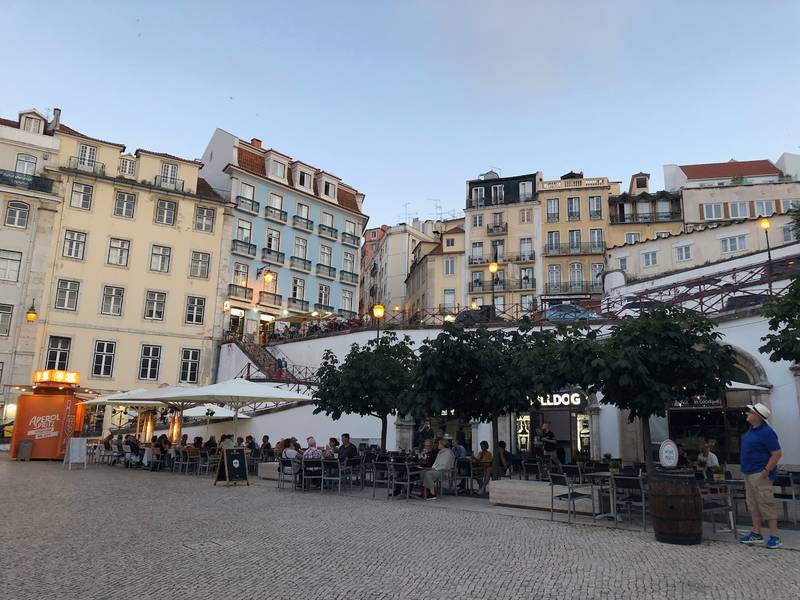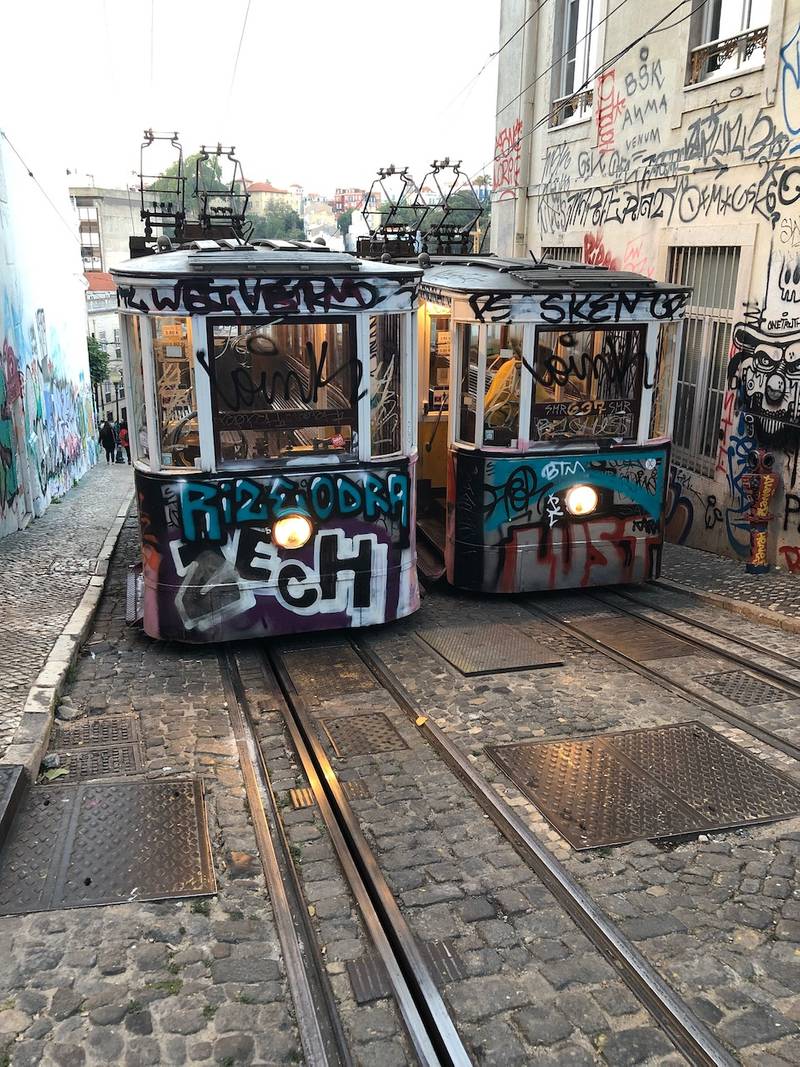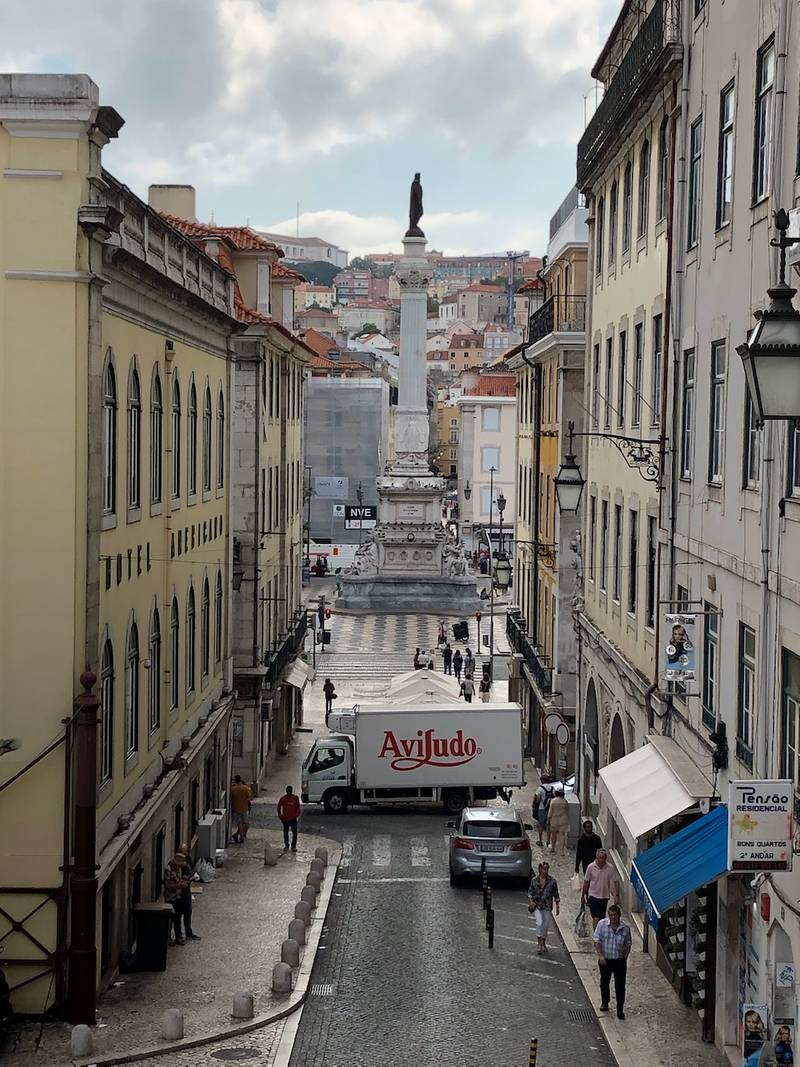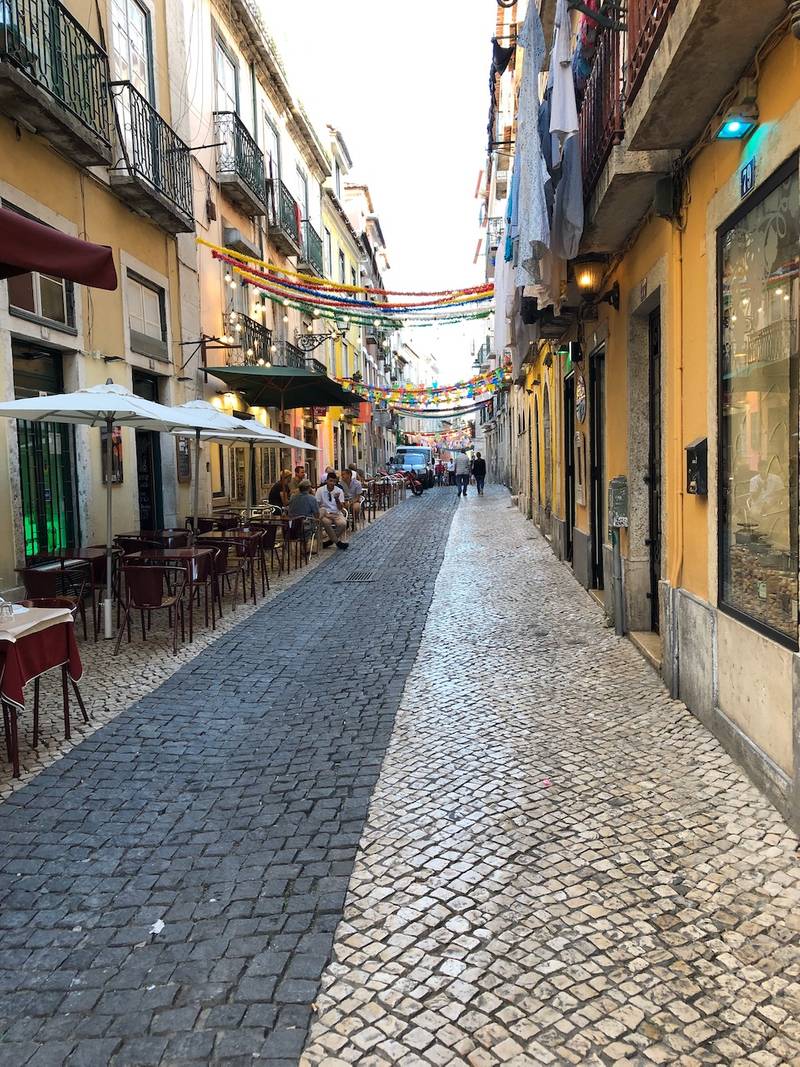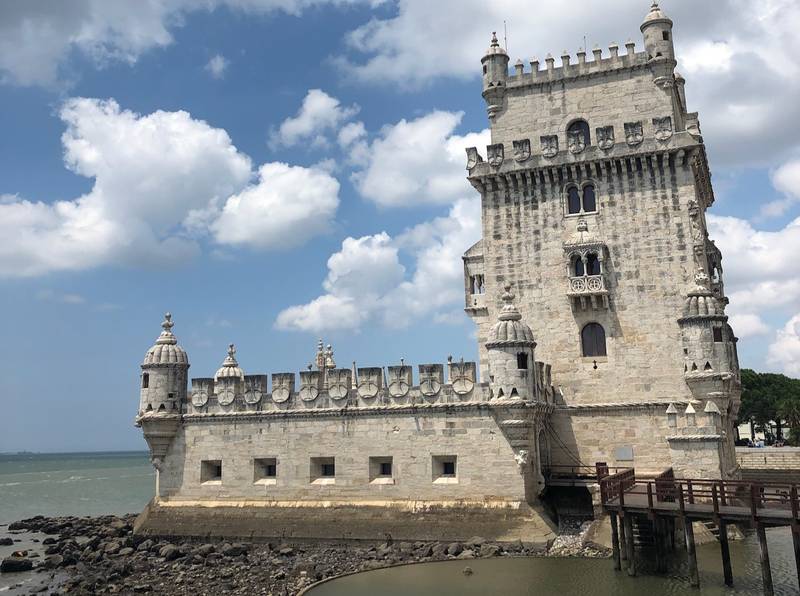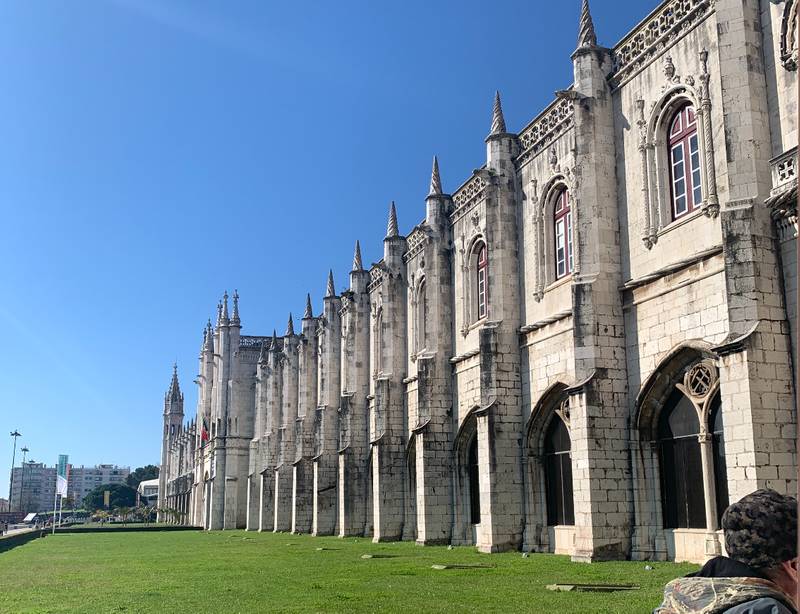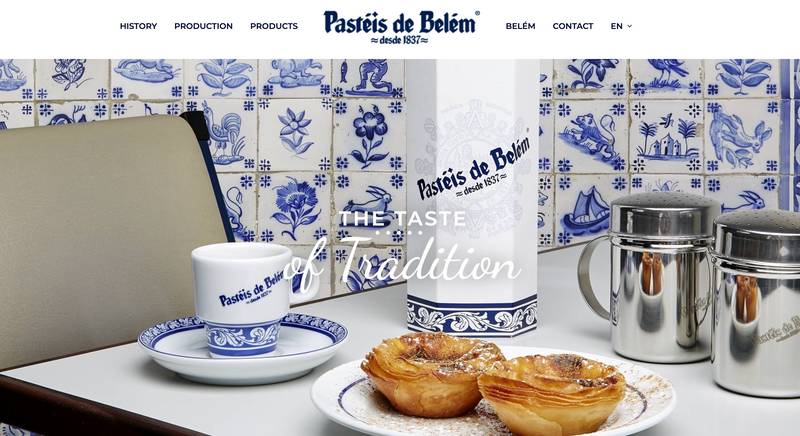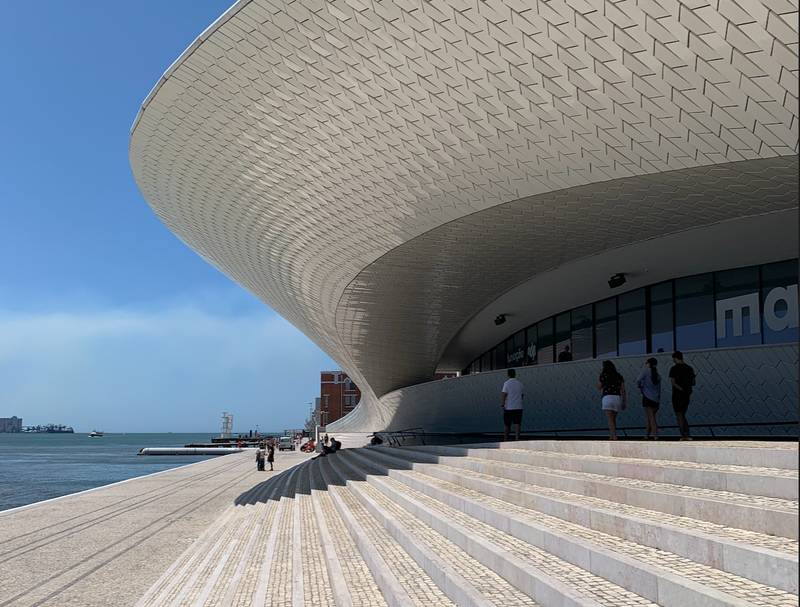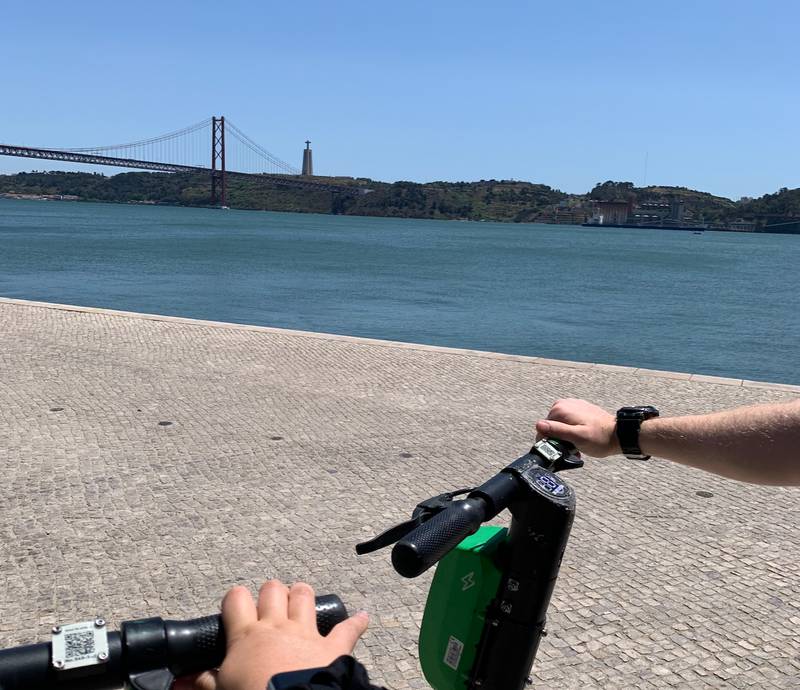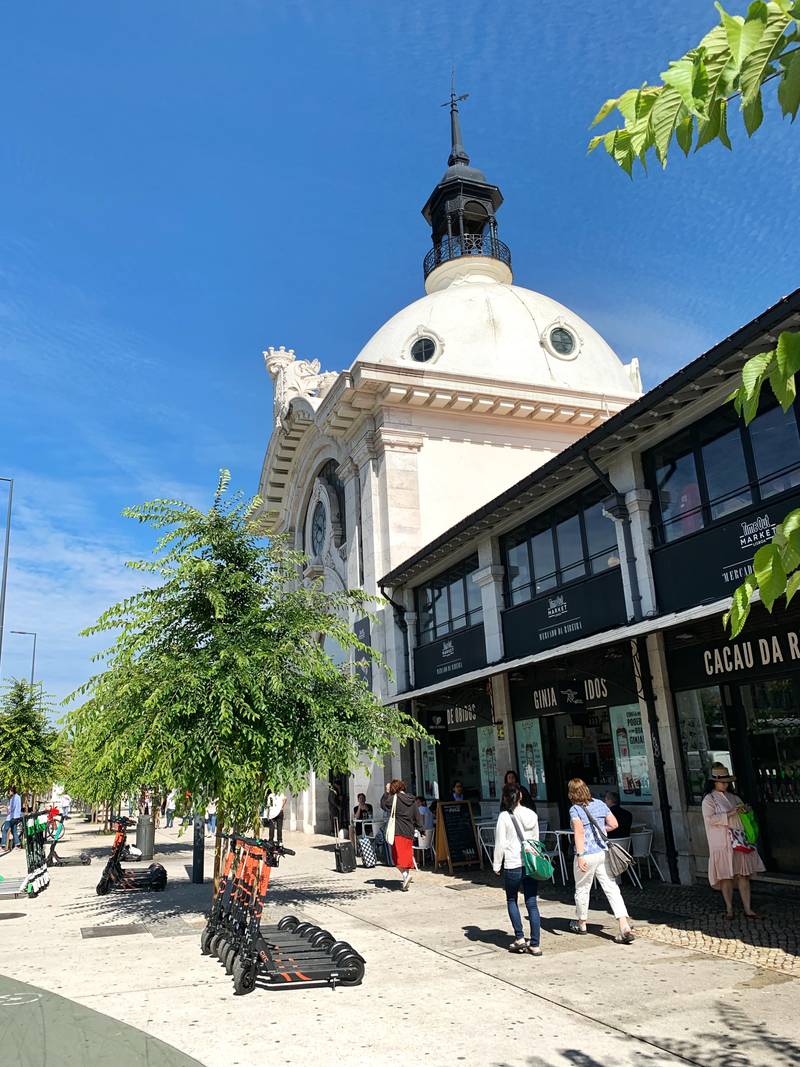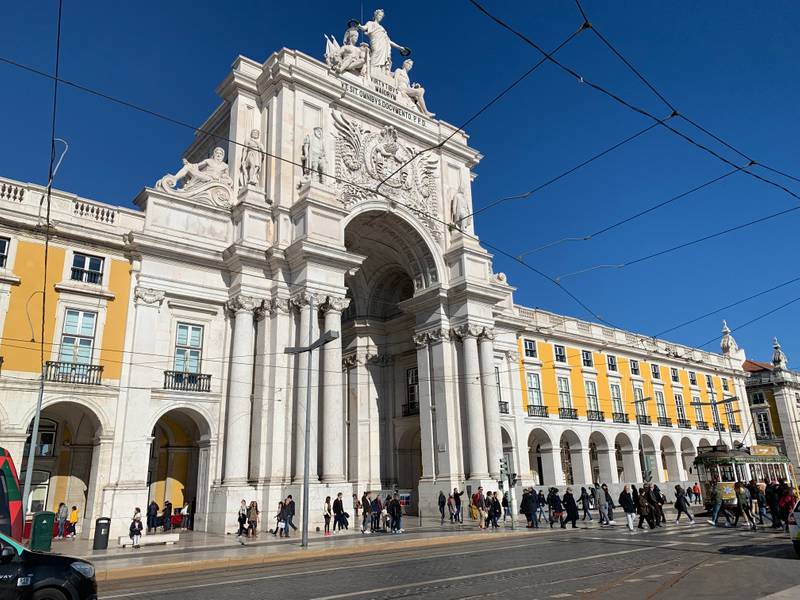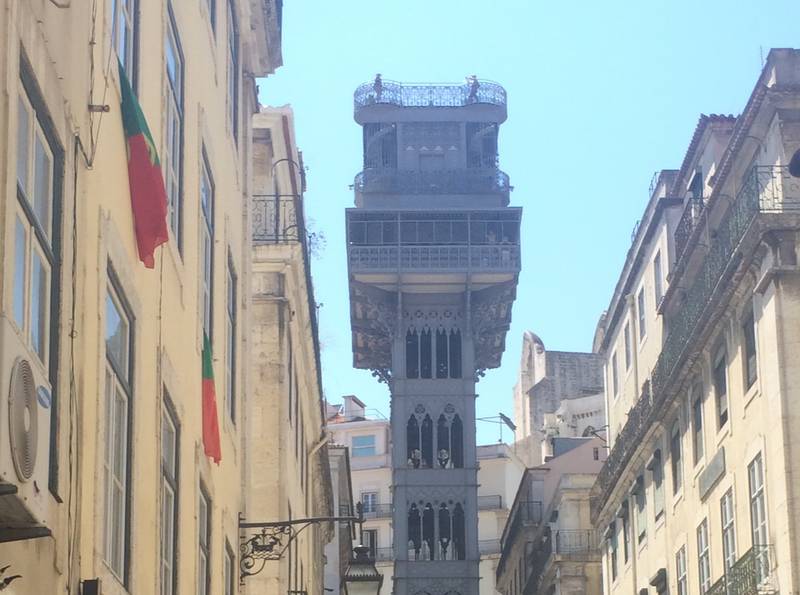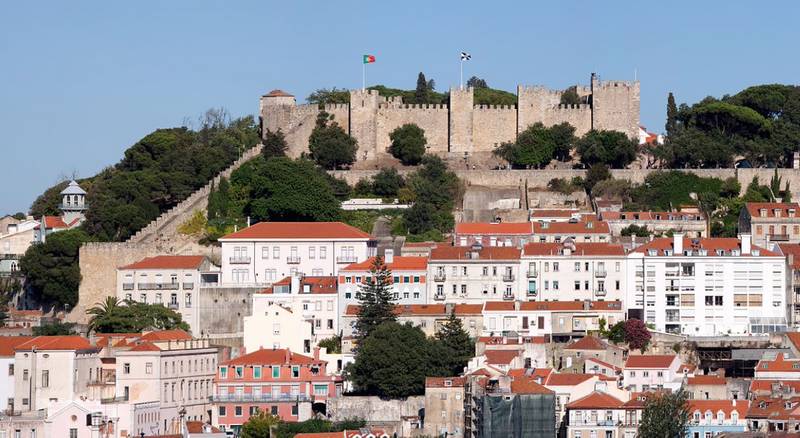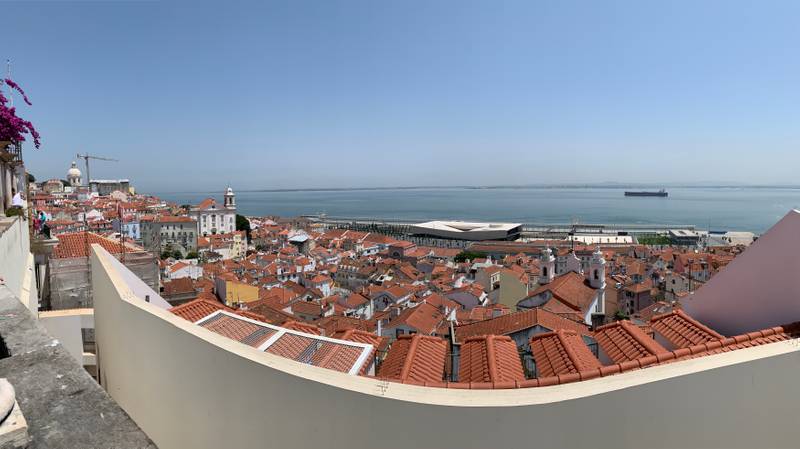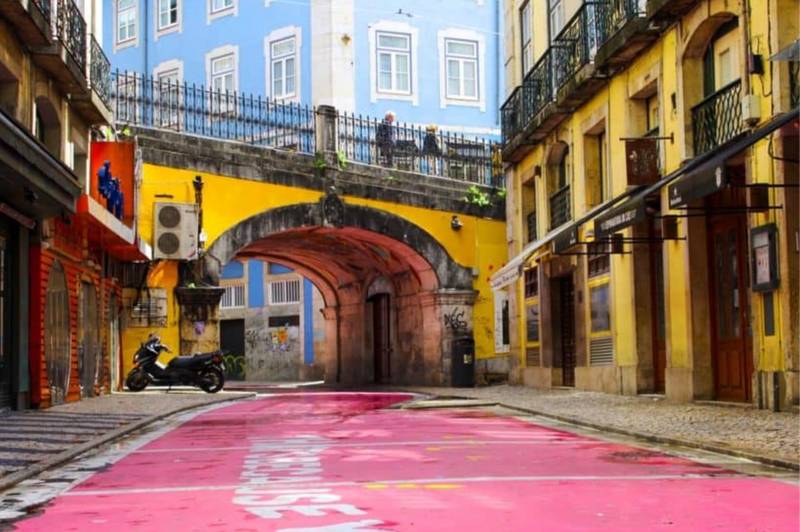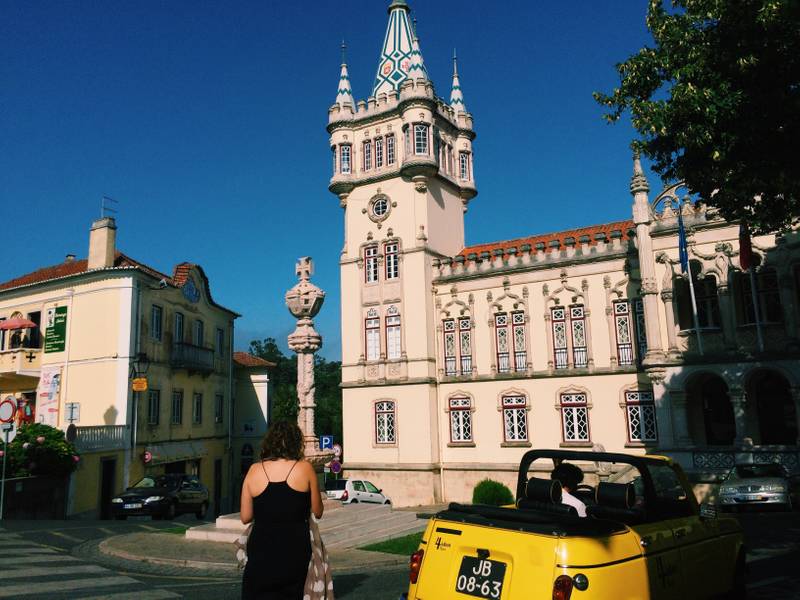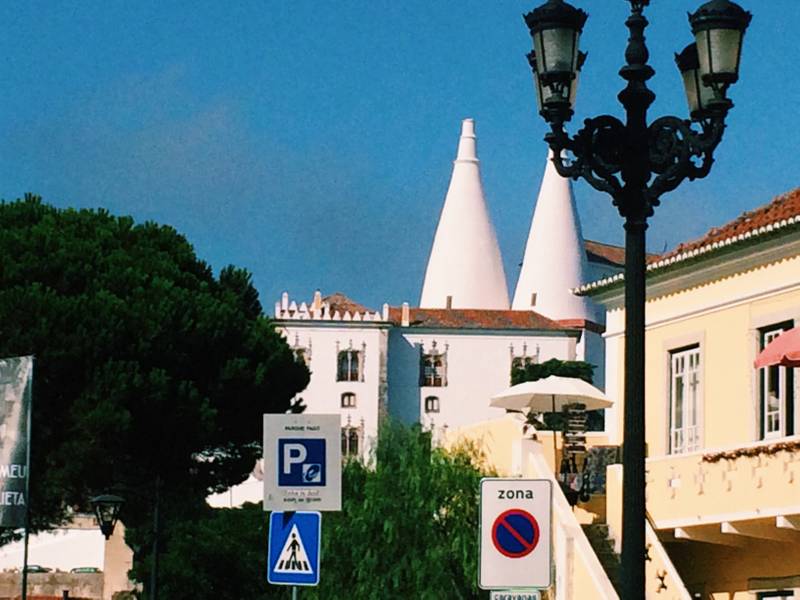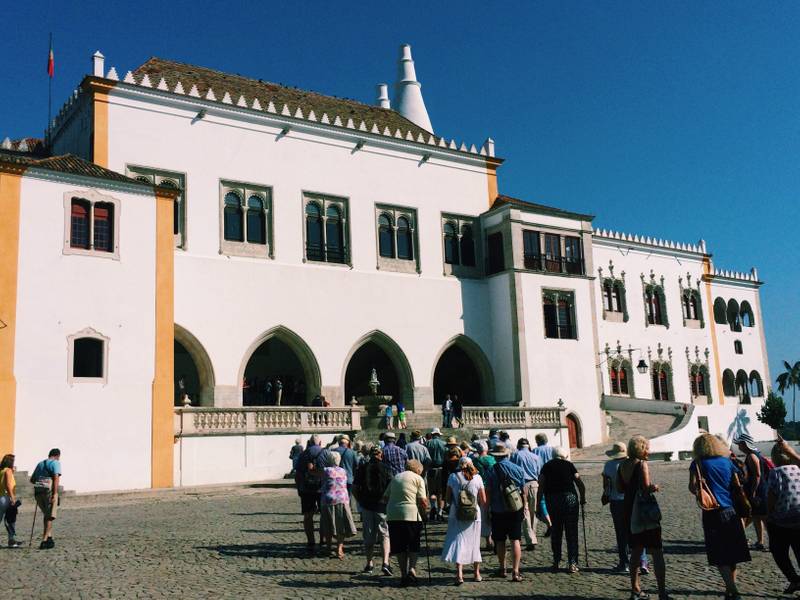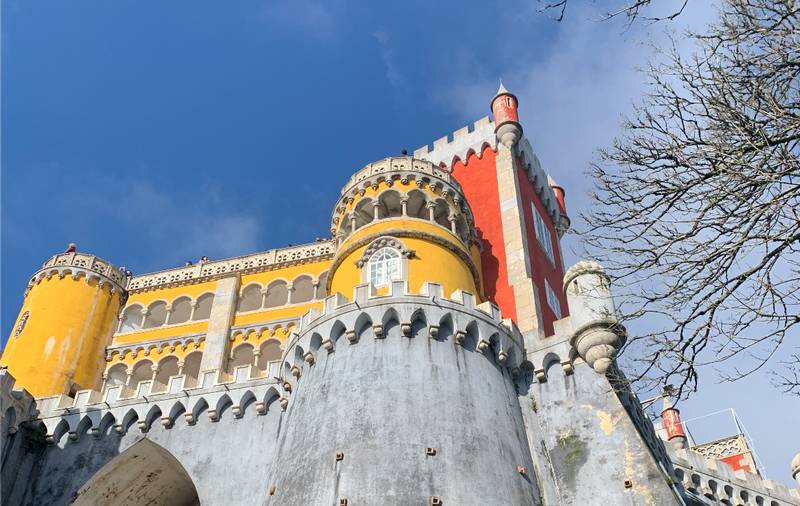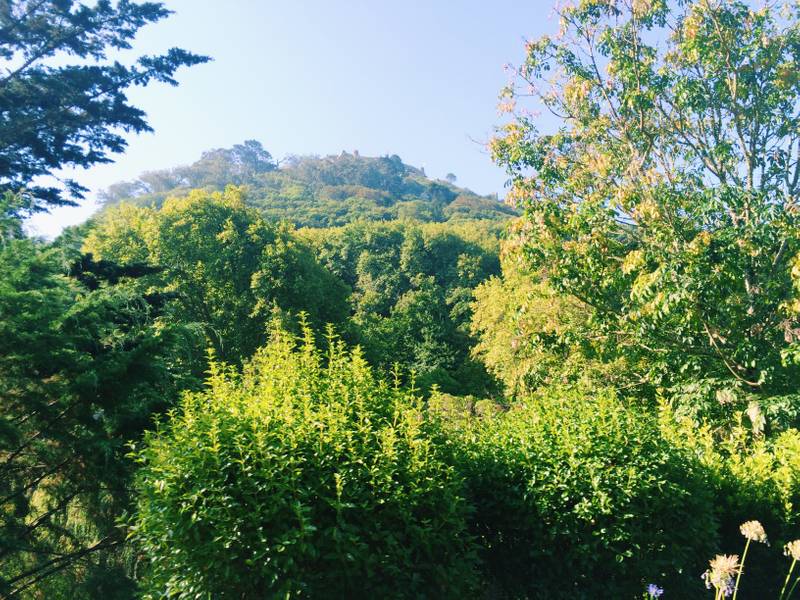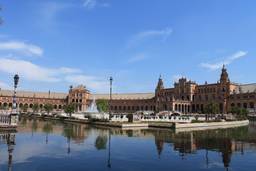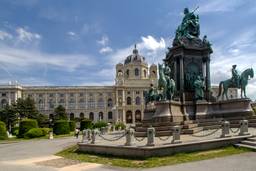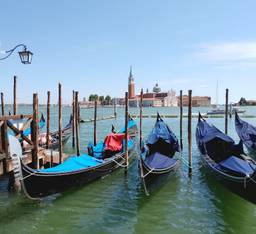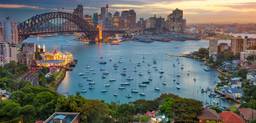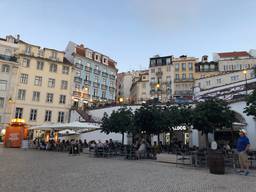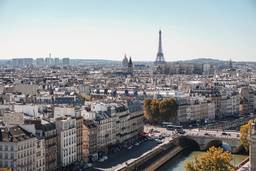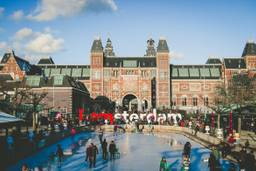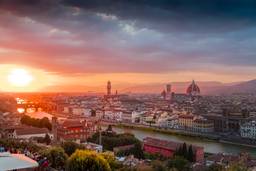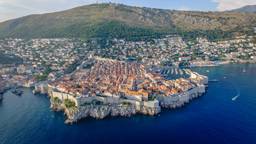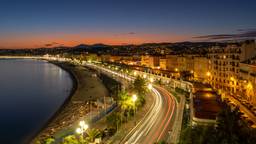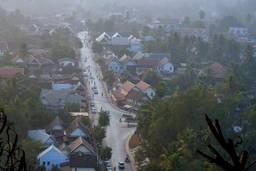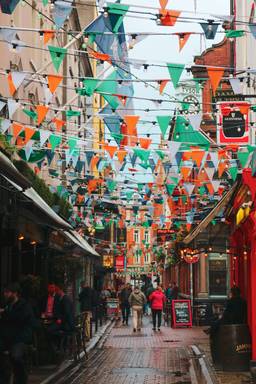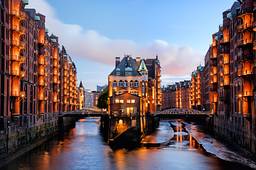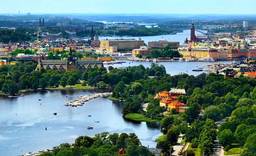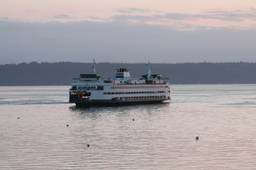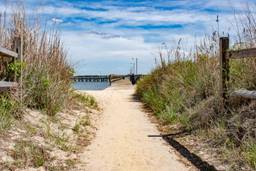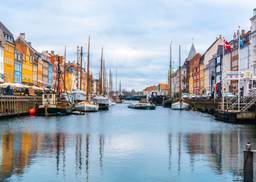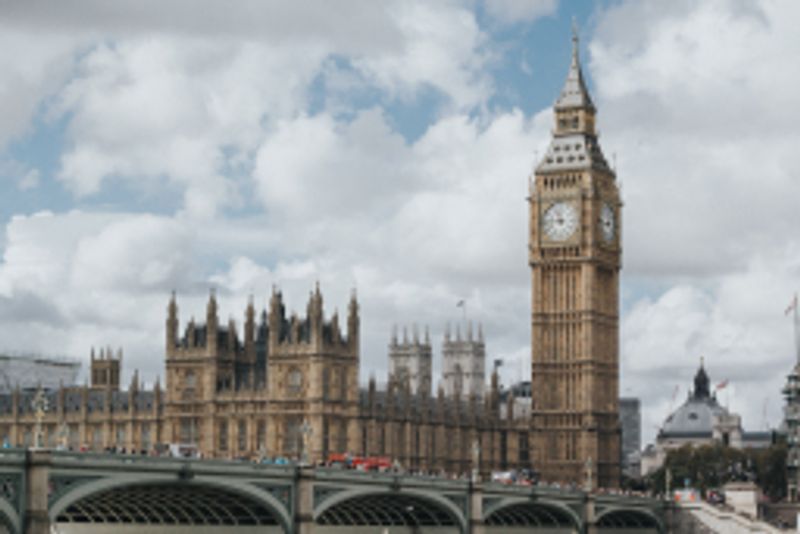How to Spend 3 Days in Lisbon
Travel Itinerary
Itinerary Introduction
Lisbon ("Lisboa" in Portuguese) is the capital city of Portugal - and offers the perfect city break if you're looking for a combination of culture, architecture, history, culinary delights and a warm climate. If you're looking for a guide on how to spend 3 days in Lisbon, then read on! In this 3 day itinerary, we'll not only explore Lisbon, but also the town of Sintra to the west - and experience the mountainous region that surrounds the city. The Iberian Peninsula, in south western Europe, hosts Portugal to the west and Spain to the east, as it stretches south towards northern Africa. Sitting just off the Atlantic ocean, on a natural estuary formed where the river Tagus (the Iberian Peninsula's longest river) meets the sea, Lisbon enjoys a gentle sea breeze to keep the summer heat at bay. Around half a million people live in central Lisbon - but the city's entire urban area hosts 2.8 million - in this, the 10th largest city in the European Union. Photo Credits: Dan HillUseful information about Lisbon
The history of Lisbon
As Europe's second oldest city (after Athens), Lisbon hosts plenty of historical sights. As a strategic location, Lisbon offered plenty - with Castelo hill offering the perfect place for a fortress. The Romans settled in Lisbon and built a wall around it to protect its citizens. In 711, Muslim invaders took Lisbon as their own - but let the local people retain their existing religions and cultures. The great Lisbon earthquake of 1755 destroyed much of the Islamic architecture, but you can still see evidence of it today in the Alfama quarter of the city - which survived the worst of the destruction. In 1108, the Norwegians raided Lisbon, but it was again taken by the Moorish in 1111. Lisbon finally became the capital city for the Portuguese in 1255. Despite the cataclysmic earthquake which razed much of Lisbon in 1755, a large variety of architectural styles can still be seen including Roman influence, Gothic, Manueline, Baroque, Modern and Postmodern.The economy of Lisbon
Until the 1970s, the Lisbon economy was dominated by fishing. Following the 1975 revolution, many of Lisbon's manufacturing firms were privatised. Today, the economy of Lisbon is dominated by services. Portugal is still a dominant provider of cork and textiles, as well as an exporter of Port wine.A fun fact from Lisbon
Did you know that people from Lisbon are known as “little lettuces” or “alfacinhas”?The language in Lisbon
The language of Portugal is Portuguese. While exploring Lisbon, you'll find that the vast majority of people working in the tourist industry (hotels, restaurants, cafes, museums and attractions) will be able to speak English.Best times to visit Lisbon
The Mediterranean climate in Lisbon is beautiful with average daily highs of around 28C (82F) in the summer and lows at 11C (52F) in the winter. The Atlantic Ocean and the gulf stream regulate the temperatures in Lisbon. Lisbon is an extremely popular city with the tourists, and therefore if you're able to travel outside of peak travel periods (school holidays), then you can have a little more freedom and cooler temperatures. A great time to travel would be spring / early summer (March to May) or late summer / early autumn (September and October).Getting to Lisbon
If you're arriving at Portugal from an international destination, it's likely that you'll be arriving at Lisbon Airport (sometime known as Humberto Delgado Airport or Portela Airport). This airport is located approximately 7km (4.3 miles) from the city centre. Low cost airlines easyJet and Ryan Air both fly into this airport as well as the main Portuguese airline, TAP Air Portugal. TAP flies into Terminal 1, as well as many of its Star Alliance Partners. Budget airlines mainly fly into Terminal 2. There are multiple ground transportation options available at the airport: 1. Train. To get to the main train station from the airport, you'll first need to take a 10 minute Metro ride to the main station "Gare do Oriente". 2. Metro. The Metro station stop at the airport is called Aeroporto Metro. A single ticket to the city centre costs €1.45. 3. Bus. It's possible to take the regular city bus, Carris, to the city centre. However, there is a limitation on baggage size that passengers can take on board (approximately hand luggage size), and therefore the Aerobus or airport shuttle may be preferable. 4. Aerobus. A single ticket costs €4 and the service runs from 07:30 to 23:00. There are multiple routes offered, however to get to the city centre, take the bus with the Cats de Sodre destination. WiFi and USB charging is available on-board. 5. Taxi. A 15 minute ride by taxi the city centre costs approximately €20. Taxis depart 24 hours a day from the main taxi terminal at the airport. 6. Other Options. Car hire is available from the airport, as is the DriveNow Car Sharing service. It is also possible to cycle from the airport via dedicated cycle routes (Portugal has 70km of cycle routes).Getting around in Lisbon
Getting around the city of Lisbon can be fun. The city is located on various different level due to its expansion up the hillsides. Walking the streets up and down the steep hills can be a little strenuous at times - but don't worry - the city's tram system (introduced in 1901) - with their iconic yellow cars - is here to help. Navigating the narrow streets, it's the tram system is a very popular way for tourists and locals alike to tour the city. Down toward the waterfront, the city becomes much flatter. Here, there are plenty of places to rent city bicycles with an app on your phone. Check out the distinctive red Uber bikes, for example. There are also plenty of electric scooters to rent - again with an app on your phone. The Lime scooters are a good example. For short distances, the scooters can be a good way to explore, but if going over all the little bumps becomes a little bone-rattling for you, or if you want to go longer distance, check out the bike rental. Check out the Viva Viagem card for occasional travel use around Portugal. It's an electronic smart card available for purchase for €0.50 on the Metro network at ticket kiosts and ticket machines. There are 2 cards: a green and a white that service different transport - the green card is suitable for all operators.Local cuisine in Lisbon
If you're looking for a typical Portuguese breakfast, you could start your day with a pastel de nata. Topped with cinnamon, the egg custard tart is quintessentially Portuguese . If you drink alcohol, then Portugal offers some excellent wines. Most famously Port ("Porto") - the Portuguese fortified wine - originates here. Look out for bottles labelled as Late Bottled Vintage (LBV) - which have many of the properties of a vintage, but are much more affordable. As you are walking around the streets of Lisbon, you may see vendors selling "Ginjinha" (sometimes "Ginja"). Ginjinha is a liquor native to Portugal - created from cherries, sugar and a aguardente base. Served in a shot glass for 1-2 Euros, you'll sometimes be offered this in a chocolate "glass".Making payments in Lisbon
The currency of Portugal is the Euro. Debit and credit card payments are widely accepted.Tipping in Lisbon
In Lisbon, it's expected to tip around 10% to taxi drivers. If you're on a tour and have enjoyed the experience, you can leave your tour guide 10% of the ticket price, and tip the driver €1 - €2. In restaurants, check to see if there is a service fee added to your final bill. Staff are paid at least a minimum wage. At lunch times, people often leave small change as a tip (for example, an €18.50 lunch might be rounded to €20) - but it is not obligatory. You may see a tip jar to add your change, or you could simply leave the change with the bill. For good service at an evening meal, you can leave 5% - 10% of the final bill price. For poor service, it is acceptable to not leave a tip. In a hotel, if a bell boy carries your bags to your room, you can tip €1 - €2.Local customs in Lisbon
Dinner is eaten later in Lisbon that you may be used to in your home country. Typically, dinner will be eaten between 20:00 and 22:00. Don't be surprised to see people eating a plate of snails while drinking a beer in a local Lisbon bar. If you see a sign that reads “há caracóis” hung outside a bar or restaurant, it means "we have snails".Where to stay in Lisbon
Popular areas to stay in Lisbon for tourists include the districts of Baixa, Aflama, Chiado and Avenida da Liberdade. Avoid staying in the districts of Bairro Alto and Cais do Sodre unless you are up for nightlife and partying!Discount card for Lisbon
The Lisboa Card is a combined pass for transport, museums and other discounts. The price depends on the number of days that the card is purchased for and starts at €20 per day for 24 hours, down to €14 per day for 72 hours and longer.Beaches in Lisbon
Lisbon has some beautiful sandy beaches accessible via public transport or car. The beach at Praia de Carcavelos, for example, is about a half an hour from Lisbon city centre by train. Other beach options include Praia da Torre, Tamariz, Duquesa, Ribeira, Estoril and Cascais.Drinking water in Lisbon
It's safe to drink the tap water in Lisbon and throughout Portugal.Lisbon - Travel Itinerary
Day 1
Belem & the River Tagus (Tejo)
Belem Tower
| Category | Price | Restrictions |
|---|---|---|
| Standard | 6.00 EUR | |
| Kids | 0.00 EUR | Under 14 |
Getting there
To get here from central Lisbon (Terreiro do Paço) you will want to grab the train from the Cais Do Sodré train station. This ticket should not cost you more than 2€ (depending on whether or not you already purchased a train ticket before). Always keep these tickets, as they are "refillable" and cost .50€. Get off at the stop "Belem" and walk for approximately 10 minutes
Travel time
0 hours 25 minutesPadrão dos Descobrimentos
| Category | Price | Restrictions |
|---|---|---|
| Standard | 6.00 EUR | |
| Students | 3.00 EUR | |
| Seniors | 5.00 EUR |
Notes
Right across the street from this monument there is also a fantastic pizza restaurant, where you can sit outside and enjoy the wonderful view. This is a great place to grab something to eat for lunch.
Getting there
The best way to get here from central Lisbon is to take the train from Cais do Sodre to Belem. If you are at one of the nearby monuments, such as the Tower of Belem, you can rent a stand up scooter for as little as .15€/minute. To do this, you simply download an app. Detailed instructions are written on each of the scooters.
Travel time
0 hours 20 minutesJerónimos Monastery
| Category | Price | Restrictions |
|---|---|---|
| Standard | 10.00 EUR | |
| Kids | 0.00 EUR | Under 12 |
Getting there
The monastery is walking distance from Padrão dos Descobrimentos and the Belem Tower. From central Lisbon, take the train from Cais do Sodre to Belem.
Travel time
0 hours 20 minutesBelem Pastries
| Category | Price | Restrictions |
|---|---|---|
| Standard | 2.00 - 10.00 EUR |
Notes
There are many places to grab a bite to eat near the Jerónimos Monastery, so feel free to use this opportunity to grab something to eat for lunch.
Getting there
2 minute walk from Jerónimos Monastery
Travel time
0 hours 2 minutesMAAT (Museum of Art, Architecture, and Technology)
| Category | Price | Restrictions |
|---|---|---|
| Standard | 5.00 - 8.00 EUR | |
| Students | 2.50 EUR |
Notes
Start your afternoon with a quick visit to the Museum of Art, Architecture and Technology, or simply enjoy the view from the top of the scenic building.
Getting there
A quick walk (or scooter ride) away from the Jeronimos Monastery (take the train from central Lisbon/Cais do Sodre to Belem)
Travel time
0 hours 20 minutesTime Out Market
| Category | Price | Restrictions |
|---|---|---|
| Standard | 5.00 - 30.00 EUR |
Notes
After you finish enjoying your riverside stand-up scooter ride (or walk), Time Out market is the perfect place to kick-back and enjoy some delicious (local) food. It has something for everyone, so you'll be sure to enjoy it.
Getting there
Time Out market is right outside the Lisbon Cais do Sodre train station
Travel time
0 hours 30 minutesDay 2
Central Lisbon
Praça do Comércio
Notes
Start your day here in this bustling part of the city center, and reach pretty much any of the local tourist attractions by tram or metro.
Getting there
Take any metro or train from where you are staying to the Cais do Sodre train station. From there, you are only a short 5-10 minute walk away.
Travel time
0 hours 10 minutesSanta Justa Elevator
| Category | Price | Restrictions |
|---|---|---|
| Standard | 2.50 - 5.00 EUR |
Notes
Make your way to the beautiful Santa Justa Elevator for one of the most breathtaking views of Lisbon.
Getting there
The elevator is only a quick walk away from Praça do Comércio, which is accessible by train and metro.
Travel time
0 hours 15 minutesSt Jorge Castle
| Category | Price | Restrictions |
|---|---|---|
| Standard | 10.00 EUR | |
| Kids | 0.00 EUR | Under 11 |
Notes
The time you will take at this location depends on how you decide to get there, and whether or not you decide to go inside (or simply enjoy the views from the outside)
Getting there
To get here you can walk, take bus 737 from Praça da Figueira, or take an Uber or Taxi
Travel time
0 hours 20 minutesSanta Luzia Observation Deck
Notes
Stop here for some rest, food, and a beautiful view of downtown Lisbon.
Getting there
The best way to get here is to walk, as this is very accessible from almost all the points in central Lisbon (and especially the castle)
Travel time
0 hours 25 minutesLisbon Cathedral
| Category | Price | Restrictions |
|---|---|---|
| Standard | 0.00 - 2.50 EUR |
Notes
On your way back down to the Lisbon city center make a quick stop at the Lisbon Cathedral, the oldest and most important of the city.
Getting there
Walking here is the best bet when you are coming from the Santa Luzia Observation Deck, but public transportation and taxis are always available.
Travel time
0 hours 10 minutesThe Pink Street
Notes
Enjoy dinner and a drink in this bustling street of Lisbon, famous for its pink road.
Getting there
This location is only a short 15 minute walk from the Lisbon Cathedral. You can also take bus 714 or call an Uber or Taxi.
Travel time
0 hours 20 minutesDay 3
A day trip to Sintra
Sintra
Notes
The earlier you make your way to Sintra, the more time you will have to enjoy the beautiful city.
Getting there
Find the Rossio train station in Lisbon and take the Sintra Line all the way to its last stop. It should take about 40 minutes and cost you 2.5€
Travel time
0 hours 40 minutesPena Palace, Sintra
| Category | Price | Restrictions |
|---|---|---|
| Standard | 10.00 - 15.00 EUR |
Travel time
0 hours 30 minutesCastle of the Moors, Sintra
| Category | Price | Restrictions |
|---|---|---|
| Standard | 5.00 - 10.00 EUR |
Notes
Enjoy the rest of your afternoon at this scenic Moorish castle. After this, you can head back to the city center of Sintra for a delicious dinner.
Getting there
Bus, Tuk Tuk, or Taxi (all clearly labeled throughout the town)
Travel time
0 hours 40 minutesReviews
Login to write a review
1 person found this helpful

